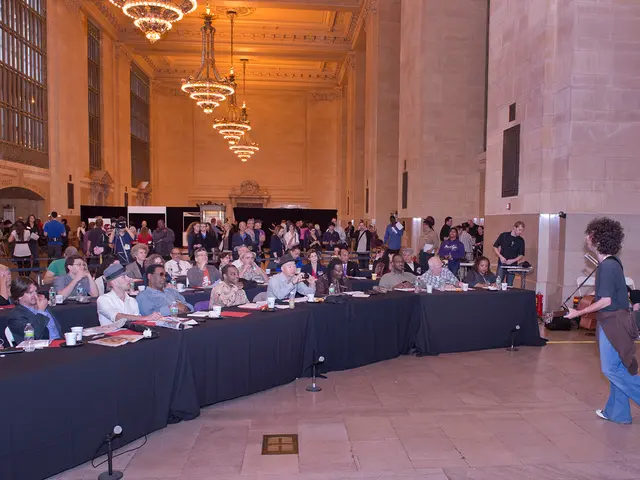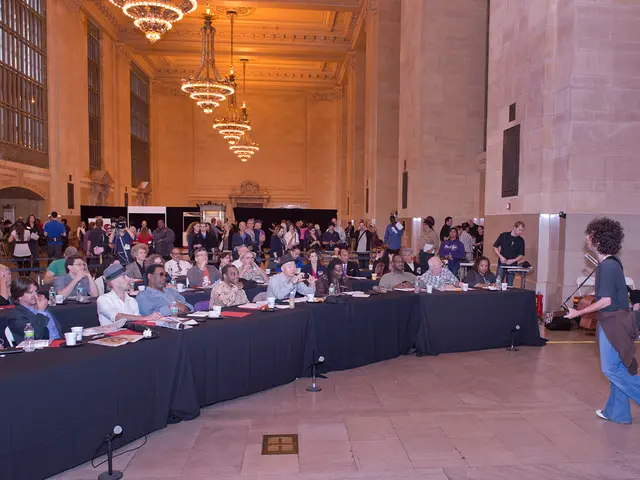Pop Art Pioneer Andy Warhol Spotlighted as "Pope of Pop Art"
Born on August 6, 1928, in a humble household of immigrants in Pittsburgh, Pennsylvania, Andy Warhol transformed into one of the leading figures in the Pop Art movement. Warhol's art explored the interplay between artistic expression, advertising, and the celebrity-obsessed culture of the 1960s. His works challenged thelimiting boundaries between art and commercialism, pushing the artistic envelope through a series of iconic creations.
Brought up by resilient parents, Warhol found solace in drawing and media. After battling a severe childhood illness that left him bedridden for long periods, Warhol honed his artistic skills and eventually enrolled in the Carnegie Institute of Technology (now Carnegie Mellon University) to study commercial art. Moving to New York City to pursue a career in commercial art, Warhol seamlessly integrated his skills with his unique artistic flair, resulting in the creation of groundbreaking works that defined Pop Art.
Warhol's ascent to fame began during the 1960s, with his trailblazing paintings of Campbell's Soup cans and Coca-Cola bottles. By transforming these everyday items into extraordinary works of art, Warhol echoed the consumer culture of post-war America. Warhol's prints of celebrities, such as Marilyn Monroe, Elvis Presley, and Elizabeth Taylor, solidified his status in the arts community, evidencing his fascination with fame, mass production, and consumer culture.
Silkscreen printing was Warhol's method of choice, allowing him to produce multiple copies of the same image. This technique emphasized the repetitive and omnipresent nature of consumer goods and advertising, eroding the distinctions between fine art and mass production. Warhol's unconventional approach to art not only redefined what art could be, but it also sparked debate about the essence of authenticity and authorship in artistic creation.
Throughout the 1960s, Warhol's reputation grew as he continued to challenge artistic and cultural boundaries. His work drew both praise and criticism, often perceived as a critique of the superficiality of modern society. Despite the polarizing opinions, Warhol's bold and daring subject matter undeniably left a lasting impact on the art world and popular culture.
The Factory, Warhol's New York City studio, became a hub of artistic activity during the 1960s and 1970s, welcoming a wide range of artistes, musicians, and underground celebrities. The Factory was a fertile environment for collaboration, where Warhol and his contemporaries could exchange ideas and work together on various projects. With its legendary parties and mix of high-profile celebrities and underground figures, The Factory remains an iconic symbol of creative freedom and the fusion between high art and commercial culture.
In addition to his visual art, Warhol had an immense impact on the film industry. He produced over 60 films and numerous short films, exploring unconventional themes like voyeurism, celebrity, and the nature of film itself through avant-garde techniques. Warhol's cinematic works questioned the boundary between reality and performance, continuing his exploration of consumer culture, fame, and media across mediums.
Andy Warhol's influence on contemporary culture and art is indelible. From the examination of consumer culture and celebrity to the challenge of traditional media norms, Warhol’s innovative talents shaped the landscape of modern art. His themes remain relevant in today's digital age, pushing the boundaries of what art can represent and question in our society.
Warhol's art continues to inspire artists, filmmakers, and designers worldwide. His groundbreaking techniques and concepts have become cornerstones of contemporary visual culture, resonating across advertising, fashion, music, and film. His work challenges us to look beyond the surface and find meaning in the most unexpected places, a testament to his lasting legacy and the depth of his impact on the artistic world.
Note:
- Warhol's use of silkscreen printing can be seen as a commentary on mass production and the commercialization of art.
- Warhol's blend of commercial art skills with unconventional artistic flair created groundbreaking works that defined Pop Art.
- Warhol's emphasis on repetition and mass production was a commentary on the consumer culture of the time.
- Warhol's silkscreen technique played a crucial role in eroding the distinctions between fine art and mass production.
- Warhol's art raised questions about the nature of authenticity and authorship in artistic creation.
- Warhol's collaboration-focused approach at The Factory reflected his belief in art as a social process.
- Warhol's silkscreen collaborative method involved his assistants in the production of his works.
- Warhol's pioneering role as both an artist and an impresario is exemplified through The Factory.
- Warhol's avant-garde film style often involved long takes, exploring themes of voyeurism, celebrity, and the nature of film itself.
- Warhol's cinematic work challenged traditional narratives and blurred the lines between reality and performance.
- Warhol's collaborations with musicians like the Velvet Underground created immersive multimedia experiences.
- Warhol's use of silkscreen printing, a method that emphasized repetition and mass production, can be seen as a reflection of his commentary on consumer culture and the commercialization of art.
- The entertainment industry was not immune to Warhol's influence; his collaborations with musicians like the Velvet Underground created immersive multimedia experiences, blurring the lines between art, music, and pop culture.








